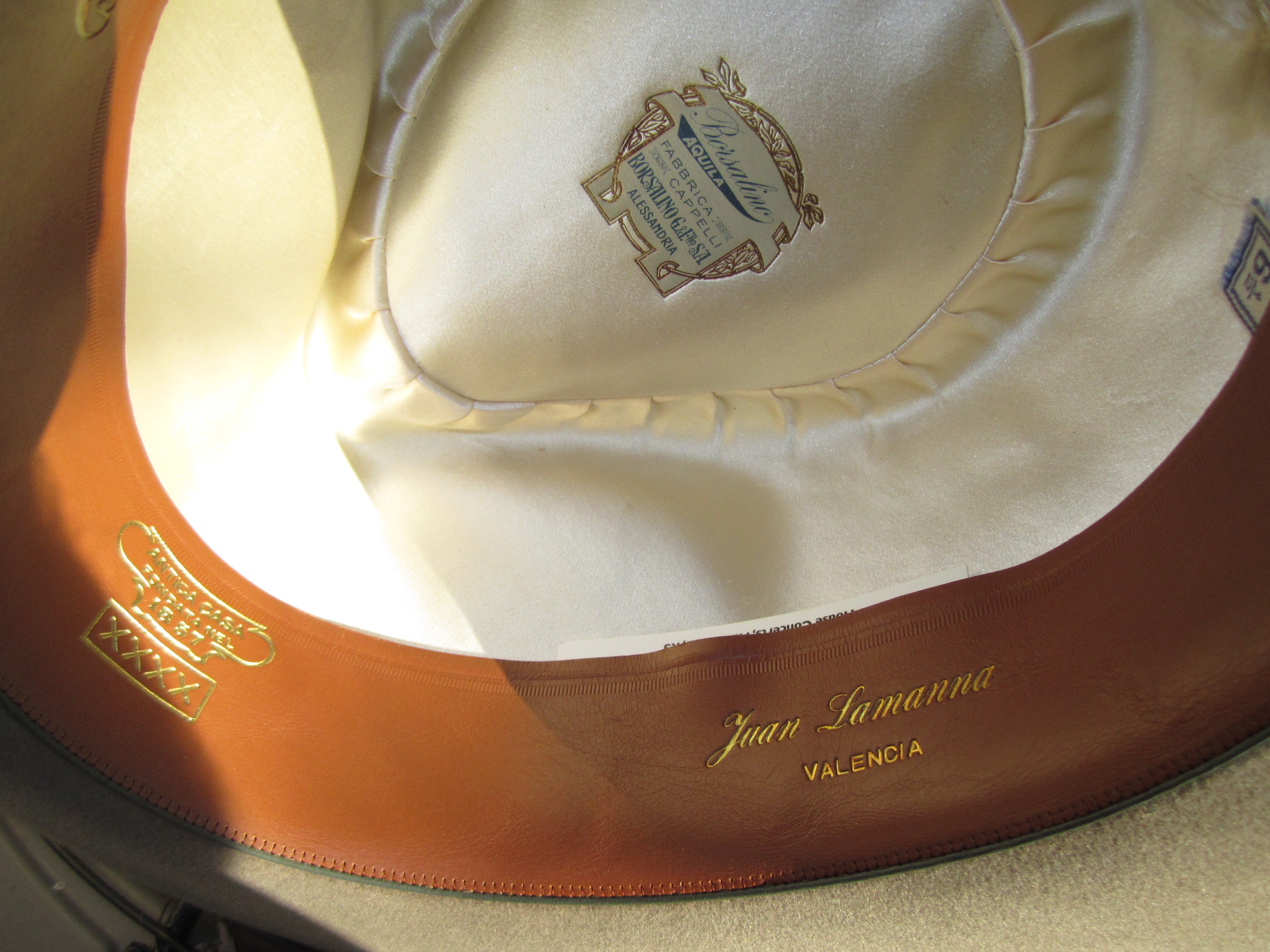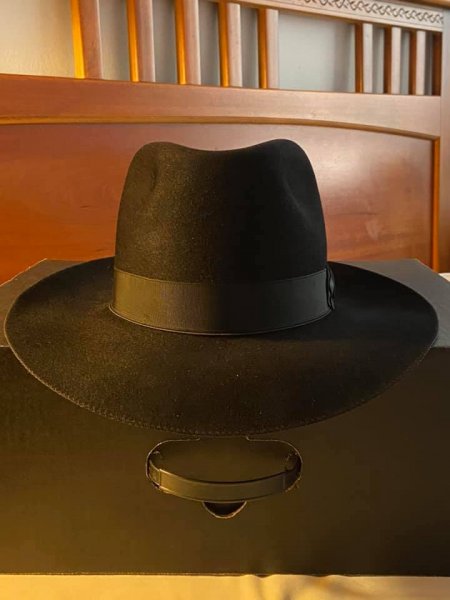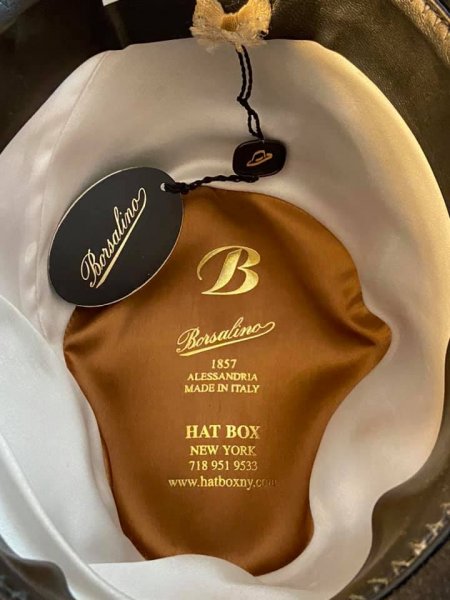Miamibruno
One Too Many
- Messages
- 1,018
- Location
- Milton, MA
Certo, Daniele.
Brim = 2 inches with a Cavanagh edge
Crown = 3 7/8th inches at the pinch
Ribbon = 1 7/8th inch grosgrain ribbon
Size = 7 ½ (6 ½ Punti)
Length of opening = 8 ¼
Width of opening = 6 ¾
Brim = 2 inches with a Cavanagh edge
Crown = 3 7/8th inches at the pinch
Ribbon = 1 7/8th inch grosgrain ribbon
Size = 7 ½ (6 ½ Punti)
Length of opening = 8 ¼
Width of opening = 6 ¾



